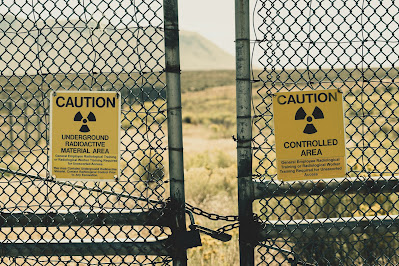Featured
- Get link
- X
- Other Apps
What is Artificial Snow Made Of?
What is Artificial Snow Made Of?
Artificial snow is a type of snow that is created artificially, rather than occurring naturally. It is used for various purposes, including winter sports, decorative purposes, and film production. The materials used to make artificial snow depend on its intended use. In this article, we will explore the different materials used to make artificial snow and how it is made.
## How is Artificial Snow Made?
Artificial snow is made using a machine that sprays a mist of water into the cold air. The water droplets subsequently crystallize to form fake snow. The first commercially successful machines were developed in the 1950s, and improvements in technology have steadily been introduced[5]. With the increase in the popularity of winter sports, the artificial snow market is expected to show significant growth[5].
## Materials Used to Make Artificial Snow
### Winter Sports and Snowmaking
Artificial snow used for winter sports and snowmaking is created by forcing water and pressurized air through snowmaking machines, resulting in tiny spherical balls of ice[5]. This process imitates the process in a real cloud, producing real snow crystals[4]. Though artificial snow and natural snow are both frozen water, most skiers and snowboarders are able to immediately recognize that the two are very different. While fresh powder is what most recreational skiers dream of, Olympic skiers have different tastes. Racers want to be able to glide as fast as possible and use their sharp edges to make powerful, tight turns. The dense, icy conditions of artificial snow allow for this[1].
### Decorative Purposes
For decorative purposes, artificial snow can be made from a variety of materials, including:
- **Polyacrylate polymer**: Sodium polyacrylate is shredded to produce flakes that resemble real snow in size and color[1].
- **Borax flakes and ammonia**: In the early 1900s, these materials were sometimes used to create decorative snow[6].
- **Asbestos**: Before the dangers of asbestos were known, it was used for Christmas tree decoration and to simulate snow in films[6].
- **Spray cans**: Fake snow has been sold in spray cans for applying flocking to windows and indoor displays[6].
- **Salt, gypsum, and cereal flakes**: These materials have been used for outdoor film scenes requiring large amounts of fake snow[6].
- **Biodegradable, eco-friendly fake snow**: Newer technology has created fake snow made of food-grade ingredients that dissolve in the rain[6].
It is important to note that artificial snow used for winter sports is different from decorative fake snow, as the former is made of real ice particles while the latter is made from various materials to simulate the appearance and texture of snow[5][6].
## Environmental Impact
The making of artificial snow uses energy, which is not only expensive but also unsustainable, and only aggravates the damage caused by global warming. The energy mainly comes from non-renewable sources and only seeks to put more pressure on the environment. Artificial snow has a high density and concentration of liquid water compared to natural snow, meaning it has a greater weight. This can cause the underlying soil to freeze, preventing the passage of oxygen and causing the death of all the vegetation below. Ultimately, this alters the ecology and biodiversity of the area[8].
## Conclusion
Artificial snow is a type of snow that is created artificially, rather than occurring naturally. It is used for various purposes, including winter sports, decorative purposes, and film production. The materials used to make artificial snow depend on its intended use. Artificial snow used for winter sports is made of real ice particles, while decorative fake snow is made from various materials to simulate the appearance and texture of snow. The making of artificial snow has an environmental impact, including energy consumption and alteration of the ecology and biodiversity of the area.
Citations:
[1] https://www.scientificamerican.com/article/the-olympics-have-100-percent-fake-snow-heres-the-science-of-how-it-gets-made/
[2] https://www.amazon.com/Artificial-Snow/b?ie=UTF8&node=15704031
[3] https://www.smithsonianmag.com/arts-culture/how-artificial-snow-was-invented-180973334/
[4] https://www.acs.org/education/resources/highschool/chemmatters/past-issues/2018-2019/december-2018/artificial-snow-a-slippery-slope.html
[5] http://www.madehow.com/Volume-4/Artificial-Snow.html
[6] https://www.amazon.com/Artificial-Snow-Fabric-Seasonal-D%C3%A9cor/s?c=ts&keywords=Artificial+Snow&rh=n%3A15704031%2Cp_n_material_browse%3A319100011&ts_id=15704031
[7] https://en.wikipedia.org/wiki/Snowmaking
[8] https://www.conserve-energy-future.com/is-artificial-snow-bad-for-environment.php
[9] https://www.economist.com/the-economist-explains/2022/02/03/how-is-artificial-snow-made
[10] https://www.wintereffects.com/en/fake-snow-shop/
[11] https://www.foxweather.com/learn/the-panicked-and-accidental-beginnings-of-snowmaking
[12] https://daily.jstor.org/the-real-problem-with-artificial-snow/
[13] https://www.snowtrex.co.uk/magazine/sustainability/artificial-snow/
[14] https://www.wintereffects.com/en/fake-artificial-snow/
[15] https://www.thoughtco.com/who-invented-the-snowmaking-machine-4071870
[16] https://ecobnb.com/blog/2020/02/expensive-artificial-snow/
[17] https://www.insidehook.com/article/science/ski-resorts-make-artifical-snow-winter-olympics
[18] https://www.walmart.com/c/kp/fake-snow
[19] https://www.rei.com/blog/news/artificial-snow-and-climate-change
[20] https://www.powder.com/stories/the-problem-with-fake-snow
[21] https://www.outdooractive.com/mobile/en/knowledgepage/the-production-of-artificial-snow/54885507/
[22] https://www.etsy.com/market/artificial_snow
[23] https://www.si.com/olympics/2022/01/24/how-is-snow-made-artificial-winter-olympics-beijing
[24] https://www.target.com/s/fluffy+decorative+snow
[25] https://www.thomasnet.com/insights/how-do-ski-resorts-make-fake-snow/
Popular Posts

Why are Memories Forgotten?
- Get link
- X
- Other Apps

How is the Colour of a Lobster Determined?
- Get link
- X
- Other Apps

Can Sound Waves Solve Plastic Pollution?
- Get link
- X
- Other Apps

Can Animals Recognise Human Faces?
- Get link
- X
- Other Apps

Is the Earth Spinning Faster?
- Get link
- X
- Other Apps

Do plants sleep? The surprising science of sleep in the plant kingdom
- Get link
- X
- Other Apps

Can Bad Times Actually Improve Your Life? Surprising Benefits of Adversity
- Get link
- X
- Other Apps

Can Brain Implants Make You More Powerful?
- Get link
- X
- Other Apps

The Future and Potential of Nuclear Batteries
- Get link
- X
- Other Apps

Could Sun Blocking be a Strategy to Combat Global Warming?
- Get link
- X
- Other Apps
Popular Posts

Why are Memories Forgotten?
- Get link
- X
- Other Apps

How is the Colour of a Lobster Determined?
- Get link
- X
- Other Apps

Can Sound Waves Solve Plastic Pollution?
- Get link
- X
- Other Apps

Can Animals Recognise Human Faces?
- Get link
- X
- Other Apps

Comments
Post a Comment